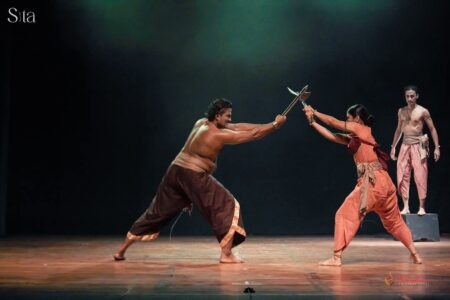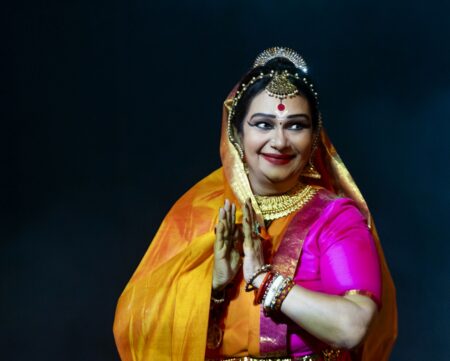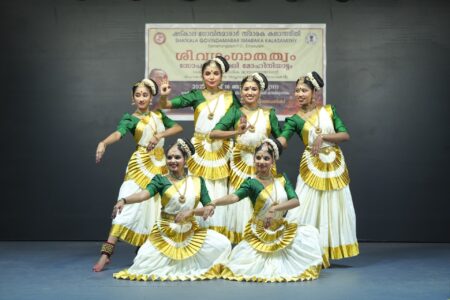In this segment, Nirmala Paniker shares her research on Tiruvathirakali that has evolved from its simple, inclusive roots into a diverse art form with intricate regional variations, reflecting the cultural and social fabric of the state.
In the last part we discussed your research on Tiruvathirakali . So, were women/girls given formal training in Tiruvathirakali in olden days?
When Tiruvathirakali is performed as a religious ritual, women of all ages, young and old, participate enthusiastically. The performance is often arranged in a centrally located house, making it convenient for women from neighbouring households to join. In its ritualistic form, even those without prior training can participate, as the dance involves simple steps and movements.
In earlier times, professional male teachers, known as Asans, provided training in Tiruvathirakali to young women from prominent families. These Asans were invited to households to teach the girls. There were also female teachers, called Asattis, who imparted lessons in this art form.
The ritualistic version of Tiruvathirakali is always performed around a lighted Nilavilakku (traditional oil lamp). The lamp is placed at the centre of the courtyard, and the women sing and dance in a circle around it.

In South Kerala, most Tiruvathirakali teachers are men. While training girls, they sometimes teach boys as well, though the boys typically do not participate in the performance. However, some of these boys later go on to become Asans, continuing the tradition as teachers of the art.
Today, we see a certain uniformity in the Tiruvathirakali performed across Kerala during Onam and other festivals. Did diverse forms of Tiruvathirakali exist in the past?
In South Kerala, Tiruvathirakali has evolved into various intricate forms, each with unique characteristics. One prominent variation is called Kolattam, named after the use of kol (sticks) in the performance. The kol is a smooth, round stick about fifteen inches long. The dancers, holding a kol in each hand, move in rhythm to the song while tapping each other’s sticks in a duet-like sequence. Occasionally, small cymbals known as Kuzhittalams are used instead of sticks.
Another variation, Talamvachattam, features performers holding small brass plates, or thalams, in their hands. The thalams rest on the palms, remaining balanced even during complex and graceful hand movements. Sometimes, a lighted wick or lamp is placed at the centre of the plate, adding a visual element to the performance.
The
variety involves dancers balancing small pots (kutam) on their heads while performing. Remarkably, the pots remain steady despite intricate movements, and some skilled performers can balance two or even three pots stacked atop one another. This feat often draws enthusiastic applause. A more challenging version combines dancing with pots on the head and thalams in hand, showcasing exceptional dexterity and balance.

A particularly captivating form of Tiruvathirakkali is Pinnalattam, performed inside a specially constructed pandal (temporary shed) or, when outdoors, near a tree. Long strings, about five metres each, are tied to a beam in the pandal or to a tree branch. The upper ends of the strings converge at a single point, while the dancers hold the free ends. Typically, twelve dancers participate, each holding one string.
As the dance progresses, the strings intertwine to form intricate patterns and are then disentangled with rhythmic movements. These patterns sometimes resemble a Uri (a hanging net used to hold pots of curds or butter). This allows the performers to enact scenes from Krishna’s childhood, such as the story of Krishna stealing butter from the Uri. A child dressed as Krishna attempts to steal the butter, only to be caught and tied up by the other dancers, adding a dramatic and playful narrative to the performance.




